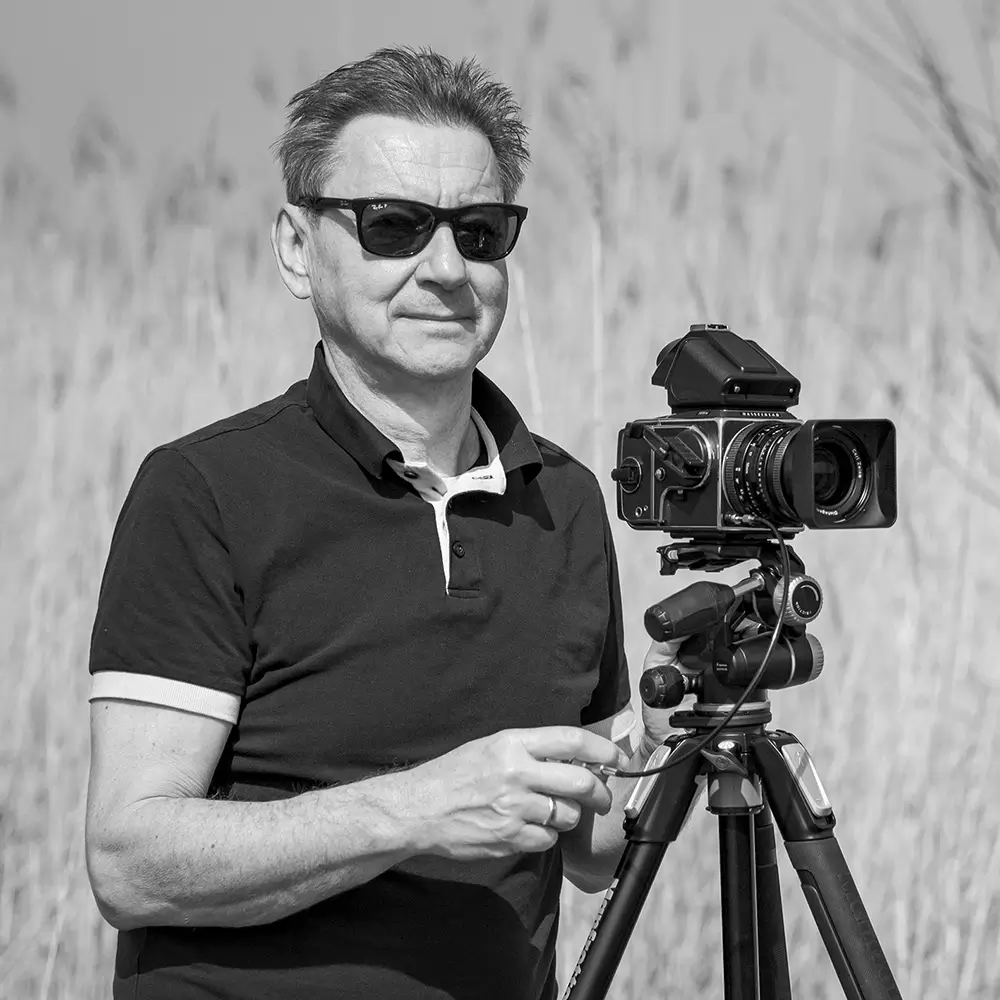I entered the professional side of photography during my studies in graphic design. It was then that I discovered the rich tonality and depth of tones that can be found in analog black-and-white photos. My photography teacher at the time, Manfred Paul, provided the necessary inspiration. Nowadays, I execute the majority of my projects using analog methods once again. This approach allows me to alleviate the time pressure from the creative process.
"The Dark River" from the cycle "Remember me?"
For several years, I have been working on my photographic series "Remember Me," which explores traces of my cultural identity. At the same time, it serves as a long-term study of the relationship between people and landscapes. My focus is on two topographies that lie beyond media attention: the Oderbruch region on the northeastern border of Germany and Poland, and the former German-speaking enclave of Hirschenhof in present-day Latvia. Both areas, which have undergone significant changes, are also imbued with traces of the last great war. My family stories are rooted in these places.
The first part of the series, "The Dark River," presented here, tells the story of my father's family's deep connection with nature. The subsequent second part, "The Dark Silence," will explore the migration and flight of my maternal family. Without explicitly stating it, the work invites reflection on the fact that economically or politically motivated migration has always existed.
The anchor point of "The Dark River" is the Oder River, which today forms the border between Germany and Poland. Along the Oder, my father's family witnessed the two-and-a-half-century-long transformation of the once primeval river and swamp landscape into an agrarian cultural area, initiated by the Prussian King Frederick II. This region also saw one of the fiercest battles of World War II in 1945. It was here, after the war, that my father met my mother's family, who had reached the Oderbruch on a trek from the Wartheland/Poland. They later met while dancing at the "Schwarzer Adler" in Seelow. In "The Dark River," long-buried memories and dreams resurface. Calm and dark, the Oder flows, filled with memories of itself and the people along its banks. The sky reflects in it, even at night. Dark shallows remain hidden. Sluggish like the stream, life moves through the plains, carrying my own family history with it. Where the landscape is left undisturbed, it recalls its own fertility and the myths that once surrounded it. Scars in its terrain remind it of its vulnerability, keeping the pain alive, and these scars grow deceptively.
The images are captured on 120 film, which I believe is the only suitable format for processing history and stories in an epic way.
